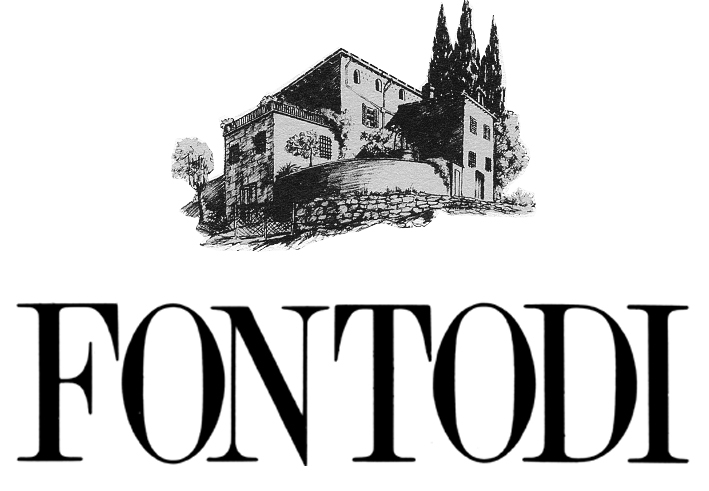Fontodi, `Case Via` Syrah


Vintage: 2021
| Vintage | Product Code | Format | Closure | Availability |
|---|---|---|---|---|
| 2021 | FO305B21 | 6 x 75 | Natural Cork | Available |
Producer
Though the Manetti family has owned Fontodi since 1968, they have lived in Chianti for centuries, producing some of Italy’s finest terracotta at their factory in Ferrone. The same attention to detail afforded to their terracotta has been reflected at Fontodi over the past 50 years, transforming a crumbling farmhouse with a few hectares of vineyard into one of Chianti Classico’s most impressive estates.
Giovanni Manetti has run the property since 1980 and ensures the wines are as meticulously made, with the vineyards and cellar immaculately tended. Giovanni’s 107 hectares of vineyard, 90% of which are Sangiovese, are planted in Panzano's prime ‘conca d‘oro’ (golden shell), creating wines of supreme elegance, intensity and longevity. The south-facing vineyards and natural amphitheatre allow grapes to ripen fully, while the high elevations ensure cool nights, resulting in good acidity retention and lovely aromatics. Soils here allow for excellent drainage, encouraging the vines to reach deep into the earth with their roots. Giovanni has converted to organic viticulture and follows biodynamic principles to obtain the best quality fruit.
In the winery, Giovanni’s approach is similarly non-interventionist. For example, he utilises very low toast oak to ensure the quality of fruit is preserved in the finished wine. The ‘Dino’ is made with 100% Sangiovese and remains for 12 months on its skins without sulphites in orci (amphorae) made at the Manetti terracotta factory. The orci rest in the cellar at the ambient temperature of 14°C and 80% humidity, perfect conditions for a slow evolution. Giovanni now uses amphorae to vinify a small percentage of all his red wines as well as his Sauvignon Blanc, ‘Meriggio’. Fontodi Bianco is made only with Trebbiano grapes from the oldest vineyards of Fontodi, with more than 50 years old. Giovanni’s Chianti Classico always shows great depth and intensity while maintaining balance. The ‘Vigna del Sorbo’ Gran Selezione is intensely concentrated. Previously containing a small percentage of Cabernet Sauvignon, in 2012 Giovanni decided the Sangiovese needed no further supplement. The ‘Flaccianello’, made from the estate’s best Sangiovese, is one of Italy’s most sought-after wines. It is powerful, fleshy and ages beautifully. The ‘Terrazze San Leolino’ Gran Selezione, is produced from a five-hectare terraced single vineyard. Here, the limestone soil creates a wine with great vibrancy and freshness, differing in style from the ‘Vigna del Sorbo’.
The Vin Santo is voluptuous and nutty, as beautifully made as their outstanding olive oils. Following years of work on quality olive oil production, Giovanni Manetti has released a new monovarietal olive oil to enhance the quality of Correggiolo.
Vineyards
Grapes for this wine are grown in the south-facing Case Via and Pecille vineyards in the Conca d'Oro (the 'golden shell') valley, an amphitheatre-shaped valley to the south of Panzano, at the heart of Chianti Classico. Well-draining 'Scaglia Toscana' soils are made up of a mixture of Galestro (clay schist) and Alberese (limestone) and encourage the vines to grow deep roots. The Syrah vines are Guyot trained with a density of 4,000 and 6,000 vines per hectare.
Vintage
2021 posed a lot of challenges across Chianti Classico. A mild, rainy winter transitioned into a cold spring where frost was an ever-present threat. However, the continued rainfall set the region up to thrive in a very hot summer, ensuring vines had sufficient water reserves. Hot days and cool nights allowed for optimal ripening and grapes with lively acidity and elegant and complex aromas. A hard but rewarding vintage that produced excellent quality wines with intricate complexity.
Vinification
On arrival at the winery grapes were destemmed and partially soft-pressed using a pneumatic press. Fermentation took place over a period of almost three weeks in temperature-controlled stainless steel tanks using indigenous yeast. The cap was punched down regularly during fermentation. After malolactic fermentation, the wine was racked into Allier and Tronçais barrels. The wine remained in French oak for 24 months before bottling, followed by six months in bottle before release.
Tasting Notes & Technical Details
This is a deep, dark and intensely-coloured wine that opens on the nose with concentrated aromas of cherry, dark plums and a touch of spice. The palate is structured and full-bodied with lovely tannins and chocolate cherry fruit characters. The finish is long and elegant.
Alcohol (ABV)
15%
Other wines from this producer
Producer | Wine | Product Code | Features | Style | |
|---|---|---|---|---|---|
| Fontodi | Chianti Classico | FO301 | R | Factsheet | |
| `Vigna del Sorbo` Chianti Classico Gran Selezione | FO302 | R | Factsheet | ||
| `Flaccianello della Pieve` | FO304 | R | Factsheet | ||
| `Meriggio` Sauvignon Blanc | FO307 | W | Factsheet | ||
| Organic Extra Virgin Olive Oil Chianti Classico | FO308 | OO | Factsheet | ||
| Vin Santo del Chianti Classico | FO310 | Sw | Factsheet | ||
| `Dino` | FO315 | R | |||
| `Terrazze San Leolino` Chianti Classico Gran Selezione | FO317 | R | Factsheet | ||
| Bianco | FO318 | W | Factsheet | ||
| `Pastrolo` Chianti Classico Gran Selezione | FO319 | R | Factsheet |